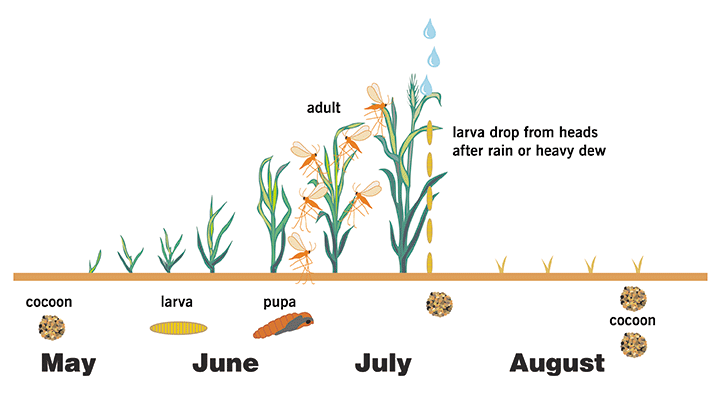
The wheat midge is one of the most destructive pests of wheat found in the northern hemisphere. Recent outbreaks in Northwestern Montana had devastating effects on spring wheat yield and grain quality, with losses estimated to be nearly $1,500,000. Unfortunately, the distribution of this pest is expanding into other wheat producing regions of the state, threating the economic viability of Montana’s wheat industry. Several tools are available to help manage this pest. Crop rotations, early planting dates, and insecticide applications can help provide short-term relief, while resistant wheat varieties and biological controls provide hope as long-term solutions. Understanding the biology of the insect and monitoring for its presence are both critical to implementing any management strategy.
